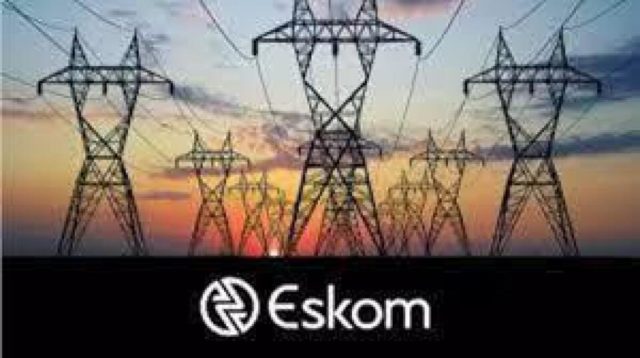Sol Plaatje Municipality baffled as to how Eskom calculated the mark-up on local electricity tariffs.
SOL PLAATJE Municipality says it doesn’t know how Eskom calculated an 84% mark-up on local electricity tariffs, slamming the statement as incorrect and misleading.
Sol Plaatje executive mayor Patrick Mabilo convened an urgent meeting with finance officials on Thursday morning following reports quoting Andre de Ruyter, the group chief executive of Eskom, stating that the Sol Plaatje Municipality in Kimberley had the highest mark-up of electricity in the country, at 84%.
In a statement issued by his office, Mabilo said he had noted recent media reports pertaining to what he termed the “alleged electricity mark-up by the Sol Plaatje Municipality”.
“Following these reports, an urgent meeting was convened to receive a report on these allegations,” Mabilo stated. “The Sol Plaatje Municipality is currently not able to determine how Eskom calculated the 84% mark-up on the electricity tariff but must indicate that this is incorrect and misleading.”
Mabilo added that he would, together with the officials, contact and seek clarity from Eskom and the National Energy Regulator of South Africa (Nersa).
“Our preliminary (unaudited) outcomes for the 2019/20 financial year indicate that the municipality purchased electricity from Eskom to the amount of R520.8m and billed out an amount of R664.7m (not cash received). This equates to a mark-up of R143.9m, which, when expressed as a percentage, is a mark-up of 27.6%,” he stated.
Mabilo added that it was important to note that the R143.9m was not the profit on electricity but the mark-up and this was used to finance the electricity fixed operating costs, maintenance, provision for bad debts, etc.
“Furthermore, the average tariff increase was 11.4% for the 2019/20 financial year while 6.22% is budgeted for the 2020/21 financial year.”
Two years ago, Sol Plaatje Municipality undertook a study regarding tariffs, and the local authority prepared a cost of supply study so that the tariffs could be in line with Nersa recommendations.
“Since last year the municipality has engaged in intensive public consultation with the community and stakeholders and directed actions towards improving efficiencies in the electricity service value chain,” Mabilo said.
“This approach included reducing non-direct costs from the tariffs paid by residents, improving detection of meters which are by-passed and not purchasing due to theft, improved credit control action to collect debt from non-paying residents, businesses and most importantly strict action against government departments, municipal officials and councillors. Speedy repairs and replacement of faulty meters are part of the maintenance programme.”
Mabilo stated further that he, together with members of his mayoral committee and officials, were committed to provide clarity on all allegations through transparency and accountability.
“Ongoing consultations will take place with all stakeholders in ensuring the municipality provides transparency and accountability to the community of Kimberley.”
De Ruyter, the group chief executive of Eskom, told the Cape Town Press Club earlier this week that the Sol Plaatje Municipality in Kimberley had the highest mark-up of electricity in the country.
“Electricity in Africa is expensive,” De Ruyter said. “If you look at the mark-ups that many municipalities apply to electricity bought from Eskom, it ranges from 17%, which is the Nelson Mandela Metro, to the highest, which is the Sol Plaatje Municipality, which has a mark-up of 84%.
“This is a very hefty mark-up. So if you operate a factory in the Sol Plaatje Municipality, which is Kimberley, you will no doubt be of the view that electricity is terribly expensive. But that’s not due to Eskom.”
The cost of electricity in the city fuelled the massive wave of violent protest actions in August 2018 which ultimately led to the suspension of the municipal manager, Goolam Akharawary, and CFO, Lydia Mahloko.
At the time, the municipality tried to implement a fixed levy of R260 a month for electricity, which many residents rebelled against, viewing it as an additional charge.
Eventually the proposed levy was scrapped and has still not been implemented, resulting in a massive deficit in the municipality’s budget for last year.
Previously the fixed costs were factored into the price per unit, which has fuelled perceptions that the city has one of the highest electricity prices in the country.
There has been ongoing pressure from Nersa to get the municipality to separate fixed costs from usage.
Nersa recently released its recommended tariffs for Sol Plaatje for the 2020/21 financial year, and it is believed that the municipality has appealed these tariffs but is awaiting a response from Nersa.
The Nersa tariffs include a 6.22% increase, as well as a basic charge of R242.25 for domestic users.
The Nersa tariffs for domestic users is R1.32 for block 1 (0-350KWh) and R1.91 for block 2 (more than 350kWh).
Sol Plaatje’s domestic tariffs, which came into effect on July 1 and are still subject to approval by Nersa, is R1.77 for block 1 and R2.47 for block 2. There is, however, no basic charge for domestic users included in the tariffs implemented by the municipality.








